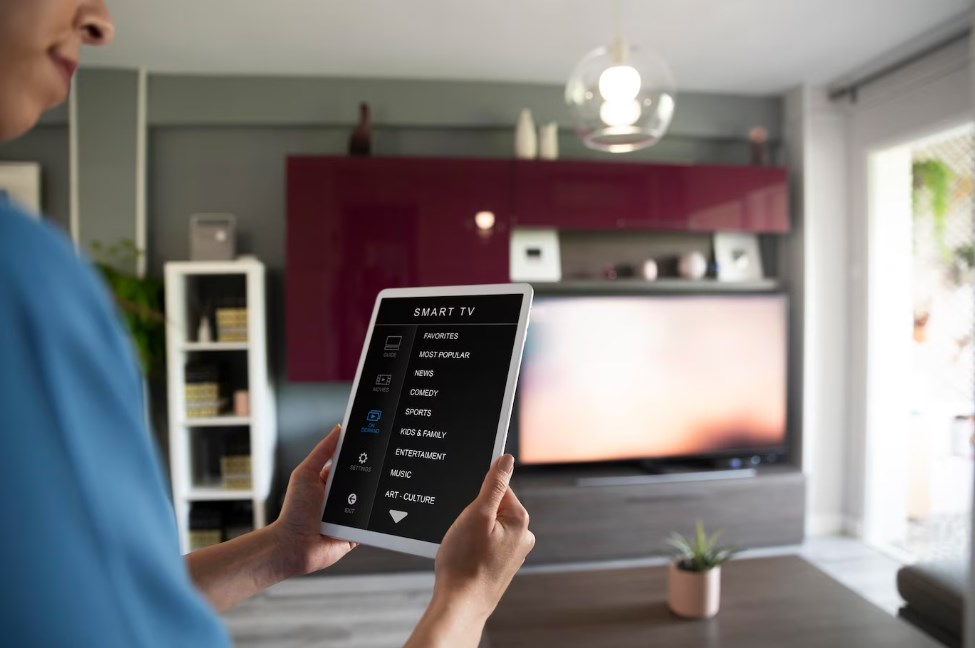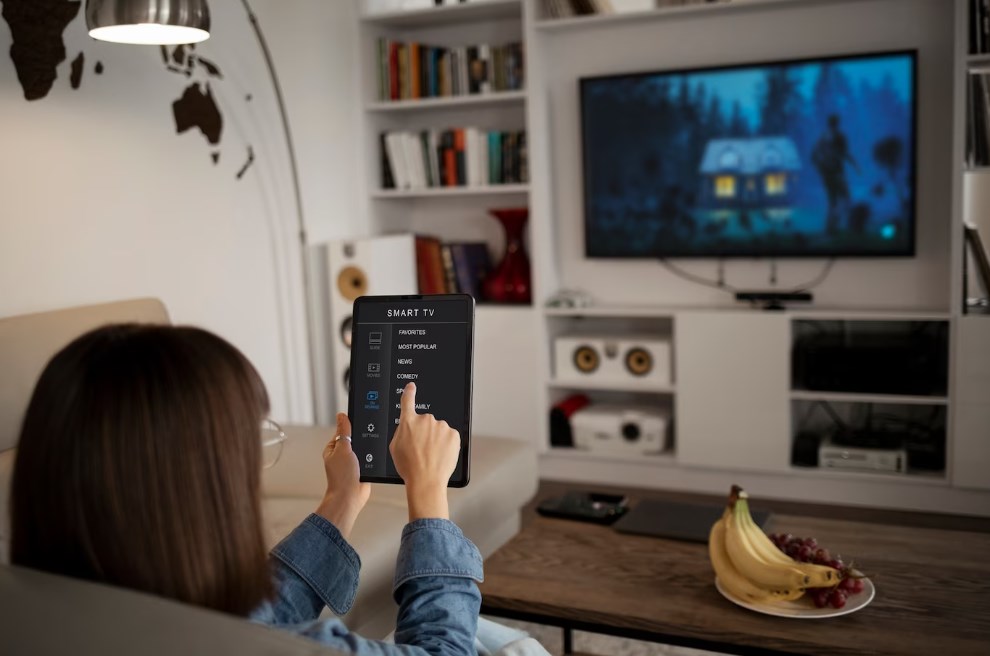In the evolving age of digital entertainment, tablets and smartphones have proven to be a significant source of content. But while these devices offer portability, there’s an undeniable allure to watching content on a larger screen, like a television. So, how can you bridge the gap between your mobile device and your TV, especially when you’re not keen on using an HDMI cord?
This article unveils multiple techniques to achieve this, ensuring you never miss out on the big-screen experience.
Exploring Techniques to Link Mobile Devices to Televisions Sans HDMI
With each technological advancement, mobile displays grow in size and resolution. They captivate with vibrant colors and sharpness, even rivaling some 4K screens. However, no matter how advanced, mobile displays can’t replicate the immersive experience of a large TV screen. Sharing memorable photos, intriguing videos, or captivating presentations becomes significantly more engaging when done on a vast television screen compared to a mobile display.
Mobile Displays: Impressive, Yet Not Always Adequate
Recollecting the debut of the iPhone, it arrived with a modest 3.5-inch display. Meanwhile, Android devices were already introducing screens surpassing the 5-inch mark. Fast forward to today, both ecosystems have embraced screens stretching beyond 6.7 inches.
These expansive displays, enhanced with sharp resolutions, have made it conceivable for two individuals to enjoy content together. But when it involves a larger audience, there’s an undeniable need to project that content onto a television.
Watching a blockbuster or sharing vacation memories feels incredibly more impactful when viewed on a vast screen.
Utilizing TVs to Play Exclusive Content
Modern televisions predominantly possess ‘smart’ features, allowing them to directly access the internet and run popular applications like YouTube or Netflix. For those without this feature, streaming devices or set-top boxes come to the rescue. But sometimes, you have specific files or niche applications on your mobile device that you want to showcase. In such scenarios, establishing a connection between your mobile device and your TV becomes invaluable.
Demystifying HDMI
HDMI, standing for High Definition Multimedia Interface, represents the cord and port that facilitate the high-quality transfer of video and audio between devices. Often found in HDTVs, DVD and Blu-ray players, it’s recognized as the go-to solution for device linkage. Yet, several challenges make HDMI less appealing:
- Unsightly wire mess;
- Limited freedom of movement;
- Misplaced or malfunctioning HDMI equipment;
- Ambiguous setup processes;
- Intricate and pricy wiring needs.
Alternative Connections Beyond HDMI
1. The USB Connection
USB cables, the common choice for charging mobile devices, can also serve as a bridge to televisions. However, it’s essential to ensure your TV has a USB port. Connecting via USB essentially transfers files from your mobile device for playback on your TV.
This process does not replicate your device’s screen on the television, making it perfect for viewing personal videos and photos. Just as with computers, accessing the content involves selecting the USB option from the ‘Source’ menu on your television, followed by prompts on your mobile device to facilitate the transfer.
2. Screencasting Techniques
Screencasting refers to the process of streaming content from devices like smartphones or tablets directly to a television. This offers viewers the opportunity to enjoy movies, series, or other digital content from their mobile device. While well-known platforms like Hulu and Netflix cater to screencasting, many applications do not feature a direct “cast screen” capability. In such cases, screen mirroring becomes handy.
Devices designed for screencasting include Roku streaming mechanisms and Google Chromecast. Some of the newer televisions even come integrated with applications to facilitate this function.
One notable distinction between screencasting and screen mirroring is that during screencasting, the television doesn’t duplicate the phone’s interface. Instead, it displays videos and pictures tailored to its own size and resolution.
Limitation of Screencasting
A potential limitation of screencasting is the inability to stream media at speeds exceeding the standard playback rate. For instance, accelerating YouTube videos or Audible books to 1.5x may not always be feasible.

3. The Art of Screen Mirroring
Screen mirroring involves displaying or duplicating your mobile device’s screen onto a television. This becomes crucial for applications that lack an inherent casting feature. Essentially, the functionality of screen mirroring is independent of specific applications. As long as the mobile device supports it and there’s a compatible television, the process can be initiated.
Android operating systems have endorsed screen mirroring for quite some time, ranging from Android 5.0 onwards. Naturally, devices with newer software provide a more streamlined mirroring experience. To initiate screen mirroring on Android, users often rely on the Google Home app. Once inside the application, the pathway is Account > Mirror Phone/Device > Cast Audio/Screen.
Modern Android devices might come with Google Home pre-installed. Additionally, brands like Samsung offer their unique screen-sharing features like Smart View.
Limitation of Screen Mirroring
A potential challenge with screen mirroring is its exact replication of the phone’s functionalities. If the phone’s display turns off, the television follows suit. To counter this, the mobile device must remain active throughout, leading to significant battery consumption.
Moreover, once a device is mirrored, it cannot be employed for other tasks simultaneously. Contrarily, with screencasting, once the content is projected, the mobile device can be used freely for other activities.
4. Streaming Using Google Chromecast
For televisions that are Chromecast-enabled or for those using the Chromecast dongle, linking a mobile device to display content becomes relatively easy. However, it’s essential to note that not all mobile applications are Chromecast-compatible. Recognized platforms like Netflix, HBO Now, Hulu, and Google Photos are some that support this feature.
To establish a connection, ensure that both the Chromecast-enabled television and the mobile device are on the same Wi-Fi network. After ensuring connectivity, select the device intended for casting. Remember, not all applications come with a casting option. In such instances, turning to screen mirroring is advisable.
Chromecast is designed to be compatible with both Android and Apple devices. When connected, the mobile device essentially transforms into a versatile remote control, offering functionalities like play, pause, rewind, or fast forward. This compact device provides access to a plethora of applications, encompassing various streaming platforms such as Netflix, Spotify, and YouTube.
5. AirPlay for Apple Devices
AirPlay, the proprietary technology from Apple, allows users with iPhones and Apple TVs to cast both video and audio wirelessly. Unsurprisingly, this tech is exclusive to Apple and doesn’t integrate with non-Apple hardware. The primary function of AirPlay is to transmit content from an iOS device to other Apple gadgets like Apple TV or iPad.
To use AirPlay, ensure both the source and receiving Apple devices are on the same Wi-Fi network. Post-connection, they’ll recognize each other automatically, allowing you to opt for the AirPlay connection within your iPhone’s settings. This process mirrors the convenience of Bluetooth for wireless connections, but it’s essential to understand that AirPlay is distinct as it’s Wi-Fi-dependent and exclusive to Apple.
One of the significant benefits of AirPlay is its extensive range, allowing users to move around without fretting about connection loss. Another advantage is its use of lossless compression, which ensures the content retains its original quality. Additionally, the seamless interaction between Apple devices is evident when using AirPlay. For example, controlling your HomePod volume is possible through your iPhone or iPad.
AirPlay’s Limitation
A potential drawback is its struggle with media playback beyond the standard rate. While testing, I noted that accelerating a YouTube video to 1.5x via AirPlay resulted in video playback, but the audio was absent.
6. Dive into Miracast
Miracast, introduced by the Wi-Fi Alliance in 2012, is a wireless standard designed to project or mirror screens from devices like smartphones, PCs, and tablets onto a TV, eliminating the need for HDMI cables.
What sets Miracast apart is its aim to be an exclusively cross-platform protocol for “screen mirroring.” This makes it distinct from tech like Chromecast or AirPlay. The term might suggest a casting ability, but Miracast is purely for screen mirroring, without the versatility of casting.
Supported Devices for Miracast:
- Windows PCs (From Windows 8.1 onwards);
- Android devices (Version 4.2 and later);
- Amazon Fire OS (Given its Android foundation).
It’s worth noting that iOS and macOS are not compatible with Miracast, primarily because Apple promotes its proprietary AirPlay technology. Furthermore, while Miracast isn’t native to Chromebooks or Linux computers, certain workarounds might be available. Devices like the Roku streaming sticks are Miracast-friendly, and the market offers a variety of dedicated Miracast receivers.
7. Introduction to Mobile High-Definition Link (MHL)
MHL, short for Mobile High-Definition Link, is an underrated wired solution designed to connect mobile devices, such as smartphones, to TVs, projectors, and audio receivers. Think of it as HDMI tailored for mobile.
To utilize MHL, one requires an MHL cable. One end plugs into the mobile device’s micro USB port while the other connects to an HDMI socket on the TV. It’s imperative that the HDMI port is MHL-compatible, as not all HDMI sockets will recognize an MHL connection.
A significant advantage of MHL over many wireless alternatives is its real-time, compressed format. A unique feature of MHL is its ability to let users control phone functions using the TV remote.
With the evolving tech landscape, many devices are moving towards Type-C USB ports. Therefore, if you wish to leverage MHL, and your device only has a Type-C USB port, consider purchasing a USB Type-C to micro USB adapter. Products like the JXMOX USB Type-C Adapter serve this purpose efficiently.
8. Understanding DLNA Streaming
DLNA, standing for Digital Living Network Alliance, is a streaming protocol supported by most smart TVs. With DLNA, users can effortlessly stream media from devices like smartphones straight to their television sets.
It’s essential to know that the media files being streamed must be free of DRM (Digital Rights Management) protections. This means users might face restrictions to streaming their own music and videos, making apps like Netflix incompatible.
Several streaming apps tap into your TV’s DLNA capability. Notable mentions include LocalCast, AllCast, and Plex. Plex serves as a unique media management tool that doubles up as a DLNA streaming application. With a Plex server set up on your computer, you can host different media types and stream them to your TV. Additionally, Plex’s mobile app can be used to browse your library, select the desired media, and stream it to your TV either through DLNA or Chromecast.
Why Retain Wired Connections in a Wireless Era?
Advocating for wired connections in today’s age of wireless tech may seem archaic to some. However, wired solutions continue to hold their own due to certain inherent advantages:
- Low Latency: Using a direct wired connection ensures minimal lag. When mirroring your phone to your TV via a cable, delays are significantly reduced;
- Stable Connections: A robust Wi-Fi connection is vital for wireless streaming between devices. In situations with weak Wi-Fi or its complete absence, wired connections offer a hassle-free, uninterrupted experience;
- Simplicity: The landscape of wireless connections between phones and TVs is vast. Apple, Google, and even individual manufacturers like Samsung have their unique ways, which can be challenging to keep up with. In contrast, wired connections, although possibly more cumbersome, offer a straightforward setup.
Final Thoughts
Many methods mentioned to connect phones with TVs involve the HDMI port. For example, even if you’re using a Chromecast dongle for wireless connections, it still requires plugging into your TV’s HDMI port. You might sidestep the HDMI cable, but the HDMI port remains a crucial component.
If you’re a traditionalist seeking the most direct connection with minimal lag, the MHL technology, though lesser-known, is a fantastic option. However, for those looking to shed the shackles of cables, numerous wireless solutions await.



